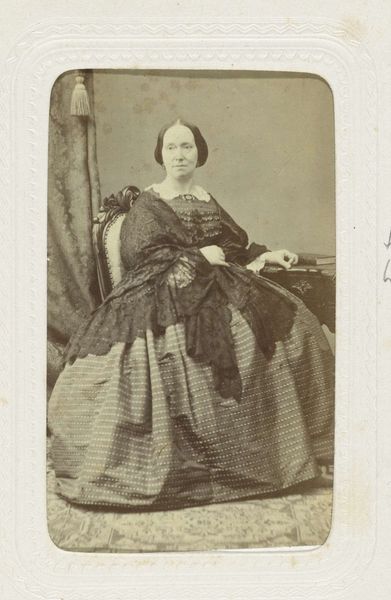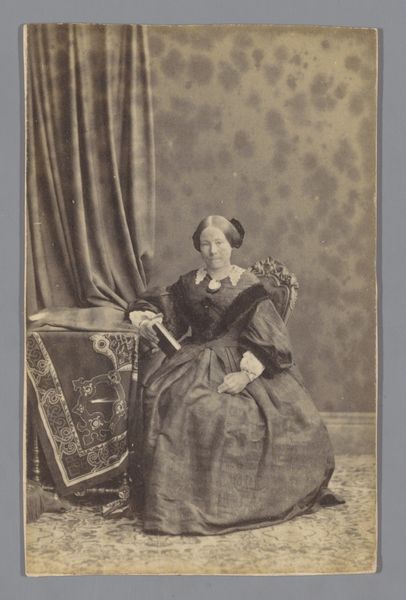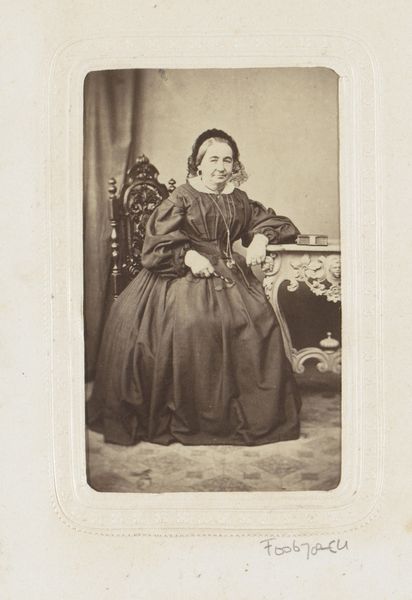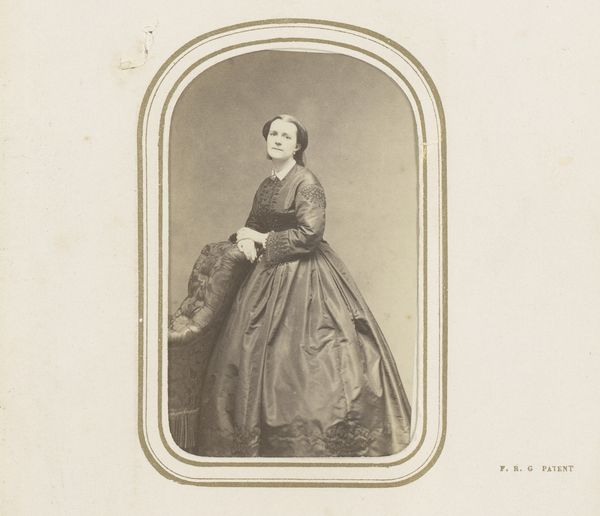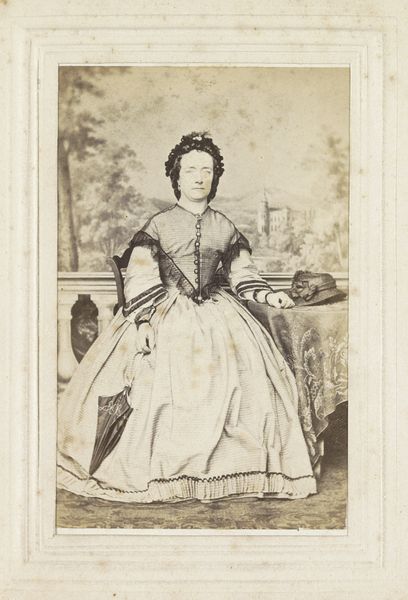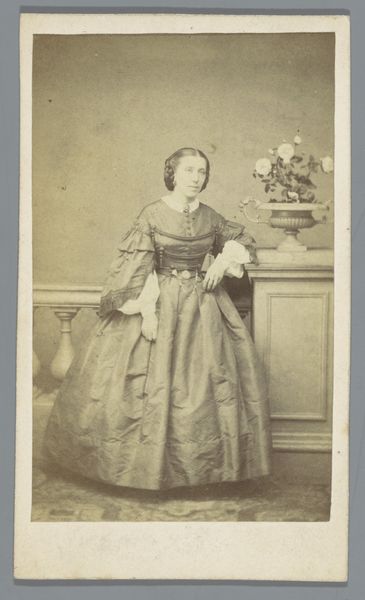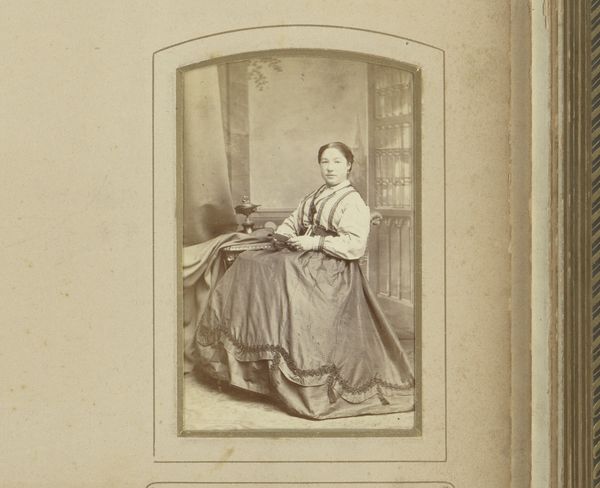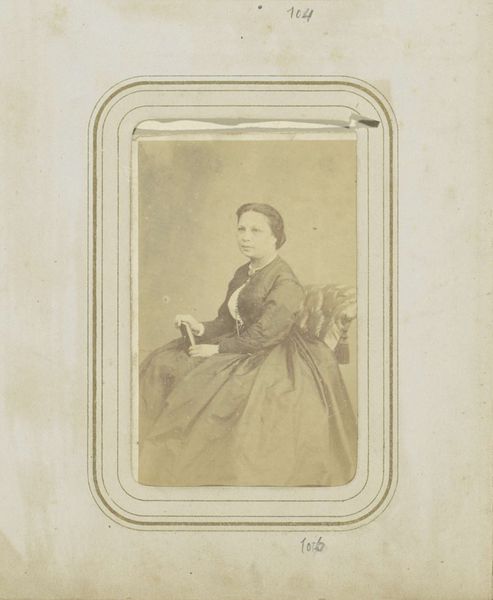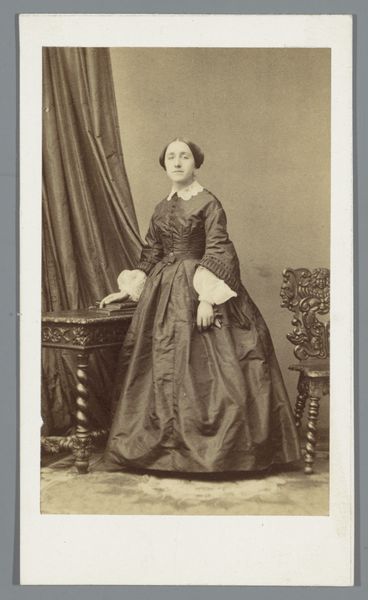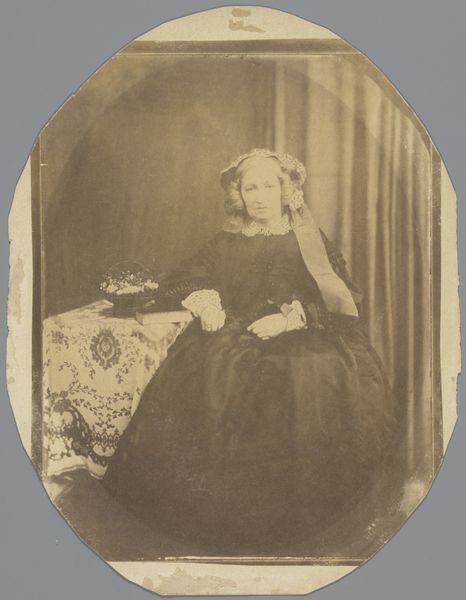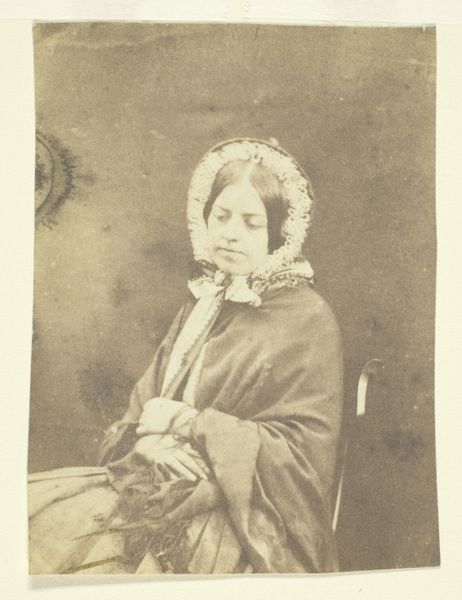
Studioportret van een vrouw met pijpenkrullen en bolle jurk c. 1863 - 1870
0:00
0:00
photography
#
portrait
#
16_19th-century
#
photography
#
historical photography
#
19th century
Dimensions: height 80 mm, width 54 mm, height 296 mm, width 225 mm
Copyright: Rijks Museum: Open Domain
Editor: This is a studio portrait from between 1863 and 1870 by Wegner & Mottu, held at the Rijksmuseum. The photograph shows a woman with piped curls and a very voluminous dress. I’m struck by the tangible materiality of the fabric – you can almost feel the weight of it. What catches your eye? Curator: My immediate reaction centers on the means of production of such a photograph. Consider the labor involved in the making of her dress, every ruffle a testament to hours of work, and the very chemical process used to capture her image. This wasn’t just pointing and shooting; each photograph of this era was the result of long exposure times requiring her stillness, specialized equipment, and technical know-how to prepare the photographic plates. Editor: That’s a good point! So the dress and the photo itself represent significant labor and resources. Does that then speak to her social standing? Curator: Precisely! The availability of such garments and photographic portraits were indicators of privilege. Think about the material realities embedded within this image: the mining of materials to create photographic supplies, and the economic systems that provided fabrics and labor. Also consider the disposable income needed for the creation of luxury goods, not limited only to photography. Editor: That’s fascinating – it transforms how I see the photo! So instead of just a portrait of a woman, it’s more of a document of the society that enabled the photograph’s very existence. Curator: Indeed. We shift our focus from just aesthetic admiration to an understanding of the systems of production and consumption at play. By viewing photographs through this lens, they offer a tangible portal into our historical material world. Editor: I hadn’t thought of it that way. Looking at the material conditions surrounding its making provides such a fresh interpretation. Curator: And hopefully you will continue to examine other artworks from this perspective to gain more holistic understanding.
Comments
No comments
Be the first to comment and join the conversation on the ultimate creative platform.
